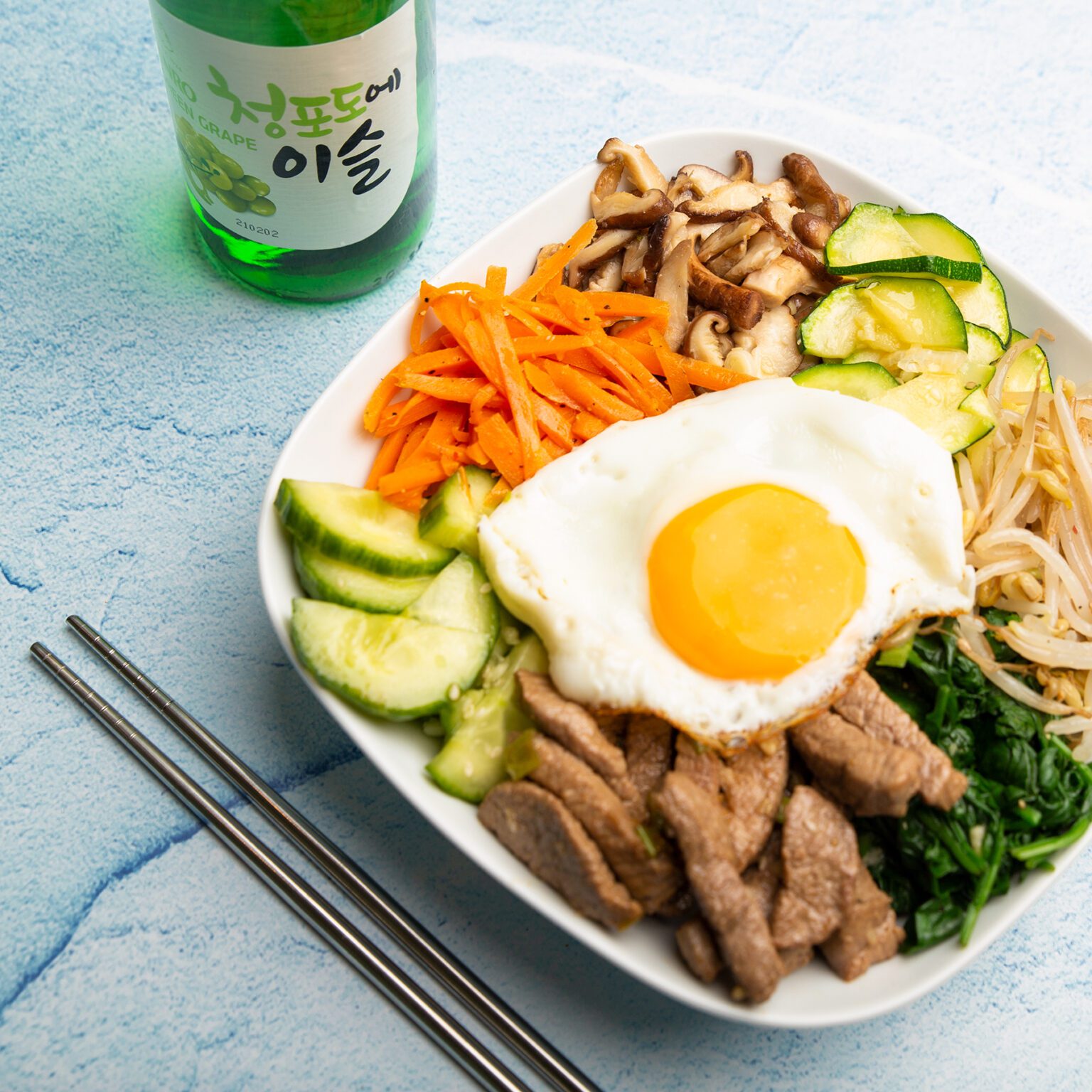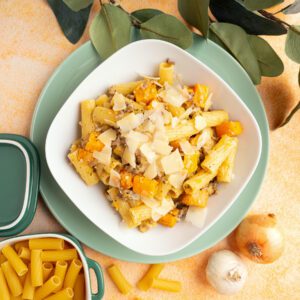Korean Bibimbap Recipe
Since this was my first timing making bibimbap, I wanted to use an authentic recipe from an actual Korean person. And in my search, I came across Hyosun’s bibimbap recipe on her blog Korean Bapsang. So the bibimbap recipe that I will be sharing here, will mostly be Hyosun’s original recipe, with some slight tweaks of my own.
After having made this recipe, I will admit, it takes some time and effort, but you get a tasty & veggie-packed dinner in return! Since you’re putting in the effort already anyway, you could also double the ingredients for the side dishes and eat bibimbap for dinner or lunch later on in the week. Just cook some more fresh rice and fry some beef and egg later on and you’re good to go!
Serves: 2 | Prep Time: 40 mins | Cook Time: 30 mins | Total: 1 hour 10 mins
Cooking & Kitchen Supplies: medium cooking pot | frying pan | small colander that fits inside your cooking pot | 7 small bowls for the side dishes and sauce
Ingredients for the Bibimbap
- 200g short-grain rice, uncooked
- 200g beef, ribeye or sirloin
- 80g bean sprouts
- 175g spinach
- 140g zucchini
- 120g cucumber
- 50g carrot (buy them julienne cut if you’re not great at cutting)
- 80g shiitake
- 3 scallions
- 2 medium eggs
- 3 cloves of garlic
- vegetable oil
- 1 tsp rice wine
- sugar
- soy sauce
- sesame oil
- roasted sesame seeds
Ingredients for the Gochujang Sauce
- 2 tbsp gochujang
- 0.5 tbsp sugar
- 0.5 tbsp sesame oil
- 1.5 tbsp water
What is bibimbap?
How to make Korean Bibimbap
- Cut your scallions and mince your garlic. Keep them close together with your sesame oil, sesame seeds & pepper and salt, you will be needing them for almost all of the steps.
- Cut your beef into thin strips of about 2inch or 5cm long. Mix in:
– 0.5 tbsp soy sauce,
– 0.5 tbsp chopped scallion,
– 1 tsp sugar,
– 1 tsp sesame oil,
– 1 tsp rice wine,
– 0.5 tsp minced garlic,
– a little sprinkle of sesame seeds,
– and a pinch of pepper.
Let the beef marinate for 20 minutes. - Cut the cucumber in half lengthwise, and then thinly slice crosswise. Generously sprinkle salt over the sliced cucumbers and set them aside for 10 – 15 minutes.
- Wash your rice a couple of times and cook it in your rice cooker, add a little less water than usual. Or cook your rice in a pot, according to the package.
- Heat up a cooking pot with plenty of water and add plenty of salt. It would be ideal if the colander reaches into the boiling water later on since that saves you time bringing water to a boil for 2 different side dishes. Leave the lid on and bring the water to a boil.
- In the meantime, cut the zucchini in half lengthwise, and then thinly slice crosswise. Set aside for sauteing later on.
- If not already bought julienne cut, cut your carrots into matchsticks. Set aside for sauteing later on.
- Cut your shiitake into thin slices. Set aside for sauteing later on.
- Mix the gochujang paste, sugar, sesame oil, and water to turn it into the bibimbap sauce, set aside for serving later on.
- The water should be boiling by now. Transfer your bean sprouts to your colander and lower it into the boiling water, boil for 3 minutes. Take out the colander with the bean sprouts, and shock them in cold water to stop the cooking process. Transfer them to a small bowl after the water has drained.
- Blanch your spinach in the salted boiling water until wilted, which will only take about 30 – 40 seconds. Then drain and shock in cold water. Squeeze out the water with your hand and cut the spinach into big bite-sized blocks.
- Squeeze out the excess liquid from your cucumber.
- All the side dishes are ready for seasoning, season everything but the cucumber with pepper and salt.
- Add 0.5 tbsp of chopped scallion, 0.5 tsp minced garlic, 1 tsp sesame oil, and a little sprinkle of sesame seeds to all the side dishes but the carrot, and add an additional 0.5 tsp of sesame oil to the bean sprouts.
- Heat up your frying pan with some oil and sauté your carrots for 1-2 minutes. Then transfer to a bowl.
- Fry your shiitake mushroom for 1-2 minutes, add a little additional oil if needed. Then transfer to a bowl.
- Sauté your zucchini for 1-2 minutes, add a little additional oil if needed. Then transfer to a bowl.
- Sauté your beef strips in a skillet for 2 – 3 minutes over high heat. Then transfer them to a bowl.
- And lastly, add a little additional oil if needed, and fry 2 eggs sunny side up. Turn off the heat just before they’re done cooking and leave them in the pan for now.
- All the individual dishes are done now! Distribute the cooked rice evenly over the deep bowls and start assembling the side dishes on top of the rice. Finish it off with the fried egg in the middle.
- Serve it with the spicy gochujang sauce on the side. Enjoy!















